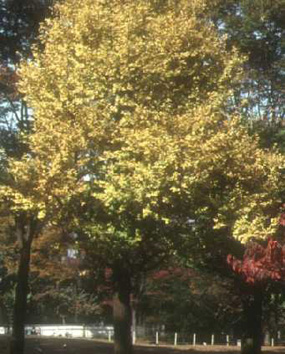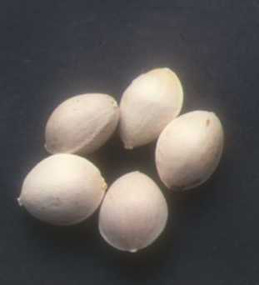|
Ginkgo is a deciduous tree originating in China, which matures a yellow fruit in the period from summer to autumn. This fruit has a particularly foul odor and can cause allergic skin inflammation if in contact with, due to bilobol contained
in the epicarp. Light yellow part inside the firm husk that can be found after peeling this epicarp is edible as ginkgo biloba.
Characteristics
| Symptoms |
It is usually considered as edible, but if lots of it is ingested at a time, it causes vomiting, diarrhea, breathing difficulties, cramps and other. There have been reports of a 1-year old boy experiencing generalized spasm 3 hours after eating 50 ginkgo biloba within approximately 7 hours, a 2-year old girl experiencing generalized spasm 9 hours after eating 50 to 60 ginkgo biloba and vomiting and diarrhea 7 hours after consumption, and a 41-year old woman experiencing vomiting, diarrhea and trembling of both hands 4 hours after eating 60 ginkgo biloba.
|
| Venomous constituents |
Vitamin B6 has an important role of serving as a neural transmitter substance in the brain. Ginkgo biloba contains 4'-methoxypyridoxine which has a structure similar to vitamin B6, which hinders the effect of vitamin B6 when ingested and is considered as poisonous since it causes deficiency disorder of B6 within a few hours. |

Ginkgo |

Ginkgo biloba |
|

